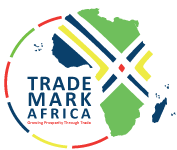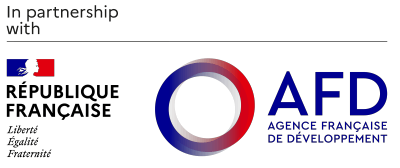NAIROBI, Kenya, 20th February 2015 – The East Africa Community member states have unveiled a state of the art video conferencing system which is aimed at drastically reducing the staff and travel costs at the EAC secretariat and member states and ensuring cost-efficiency gains in communication and decision-making. The launch which was held during the 16th Ordinary Summit of the East African Community Heads of States at the Kenyatta International Conference Centre, was presided by the chair of the summit H.E Jakaya Mrisho Kikwete, President of the United Republic of Tanzania, and flanked by his fellow heads of state from the region; H.E. Pierre Nkurunzinza, President of Republic of Burundi, H.E. Uhuru Kenyatta, President of Republic of Kenya, H.E. Paul Kagame, President of Republic of Rwanda and H.E. Yoweri Museveni, President of Republic of Uganda. Also in attendance was Amb. Dr. Richard Sezibera, Secretary General, EAC, Phyllis Kandie, Cabinet Secretary of Tourism, Commerce and East African Affairs and Frank Matsaert, CEO, TradeMark Africa (TMA). TMA provided funding for the system to a tune of $1.8million.
Since 2011, TMA has been implementing a programme of support aimed at strengthening the technical and institutional capacity of the Secretariat. As part of a broad institutional reform programme that is on-going, and particularly as part of the Secretary General’s drive to realise cost-efficiency gains in communication and decision-making, the Council approved the acquisition and installation of a Video Conferencing System (VCS) for the Community.
The key benefits are enhanced efficiency in communication and savings on travel costs. In any one year, the EAC holds approximately 850 meetings. All meetings require travel to the Secretariat in Arusha or to any of the five Partner States. The total travel budget for the Secretariat– let alone the entire Community – is in excess of $13 million a year. The total anticipated savings (in air tickets, allowances and hotel expenses) for the Secretariat is estimated at $1.3 million every year assuming only 10% of the meetings are conducted via VC. This constitutes a significant reduction in current spending on staff travel. In sum, the VC equipment will assist the Secretariat to improve the EAC’s management of its financial resources. The project is expected to achieve modest target savings every year as follows:
Speaking at the launch, H.E. Uhuru Kenyatta, President Republic of Kenya noted:
“This facility is a milestone to the vision of an integrated East African Community. It aims to provide greater access and bring efficiency to decision-making process of the governments in our region. Here in Kenya, the facility will be accessed through the offices of the State Department of East African Affairs (SDEAA) where they have been fully installed. We will now be able to conduct some of technical and consultative meetings through this video and in the process enable Partner States reduce some of the logistical and travel expenses”
He also commended TradeMark Africa for its support in funding the system which will help the EAC member states improve on decision making and communication.
Speaking at the launch, Cabinet Secretary for the Tourism, Commerce and EAC Affairs, Phyllis Kandie noted:
“The launch of this facility heralds a new way of doing business as we drive the EAC integration process forward. Cheaper and efficient interactive processes will mean increased interactions for purposes of consensus building on various issues. I would like to thank TMA for their support in actualizing this noble project, and the EAC Secretariat for working extremely hard to ensure the project comes to fruition.”
Speaking at the launch, Secretary General of the East African Community Secretariat, Amb. Dr. Richard Sezibera said
“The EAC Organs and Institutions hold approximately 800 meetings annually, at an estimated cost of USD 12 million. This is likely to grow as the scope of EAC strategic objectives expand. The cost of running the meetings is not sustainable. It is against this background that the Council began to explore new ways, including the use of technology, to address cost control and to enhance efficiency and speed of communication, both formal and informal at the EAC Organs and Institutions.”
Matsaert reiterated the significance of the project to TMA
“We applaud the Council and the Summit’s decision to introduce a Video Conferencing System as part of the drive to not only improve efficiency in communication, but as an effective way of managing the travel budget and thus help conserve the limited resources of the Community. Indeed, initial estimates show that using the system at least 20% of the time could save up to $2 million dollars a year; resources that the Community could apply to other priorities ’’
Source: TradeMark Africa (TMA)
TradeMark Africa (TMA) is an aid-for-trade organisation that was established with the aim of growing prosperity in East Africa through increased trade. TradeMark Africa (TMA) operates on a not-for-profit basis and is funded by the development agencies of the following countries: Belgium, Canada, Denmark, Finland, the Netherlands, UK, and USA. TradeMark Africa (TMA) works closely with East African Community (EAC) institutions, national governments, the private sector and civil society organisations.















